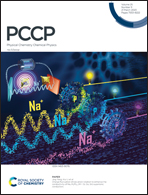Recent progress in polyaniline-based composites as electrode materials for pliable supercapacitors
Abstract
Significant contributions have been made towards the development of flexible energy storage devices to meet the ever-growing energy demand. Flexibility, mechanical stability, and electrical conductivity are three critical qualities that distinguish conducting polymers from other materials. Polyaniline (PANI) has drawn considerable attention among the various conducting polymers for use in flexible supercapacitors. PANI offers several desirable properties including high porosity, a large surface area, and high conductivity. Despite its merits, it also suffers from poor cyclic stability, low mechanical strength, and notable discrepancy between theoretical and actual capacitance. These shortcomings have been addressed by creating composites of PANI with structurally sturdy elements such as graphene, carbon nanotubes (CNTs), metal–organic framework (MOFs), MXenes, etc., thus enhancing the performance of supercapacitors. This review outlines the several schemes adopted to prepare diverse binary and ternary composites of PANI as the electrode material for flexible supercapacitors and the significant impact of composite formation on the flexibility and electrochemical performance of the fabricated pliable supercapacitors.

- This article is part of the themed collection: 2023 PCCP Reviews


 Please wait while we load your content...
Please wait while we load your content...